The laboratory: E*thirteen Helix/XCX Race drivetrain long-term test – new competition for the drivetrain top dogs?

When we talk about MTB drivetrains, E*thirteen is not the first name that comes to mind. Nevertheless, the Californian manufacturer offers a wide range of components that are compatible with the drives of all major component manufacturers. We literally dragged E*thirteen’s drivetrain components through the mud for an entire year to figure out how they work.
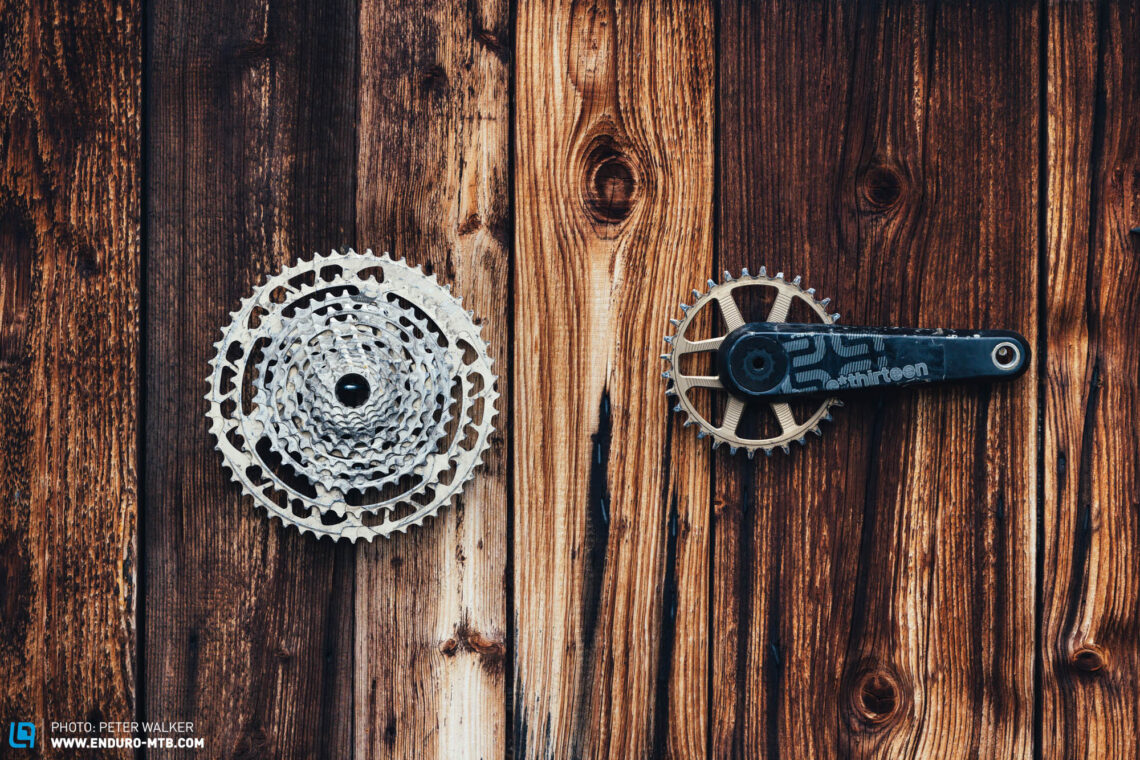
E*thirteen began in 2001 as a small boutique brand that designed and manufactured chain guides. The brand is now known worldwide and offers a wide portfolio of components, including Vario seat posts, wheels, tires and drives. Last year we extensively tested an E*thirteen drivetrain consisting of an XCX Race Carbon crankset and Helix Race cassette. The XCX Race carbon cranks were developed specifically for cross-country use, while the Helix Race cassette is intended to cover a wide range of uses. Thanks to the countless colors available, it can not only be perfectly matched to your bike, but also has some features that may not be apparent at first glance. Firstly, the drive components are compatible with rear derailleurs and chains from SRAM, Shimano and TRP and what’s more, the Helix Race cassette has the widest gear range currently on the market at 578%, ranging from 9 to 52 teeth. The complete package consisting of crank, chainring and cassette costs €875.93 and weighs 798 g – plus the weight of the rear derailleur, shift lever and chain.

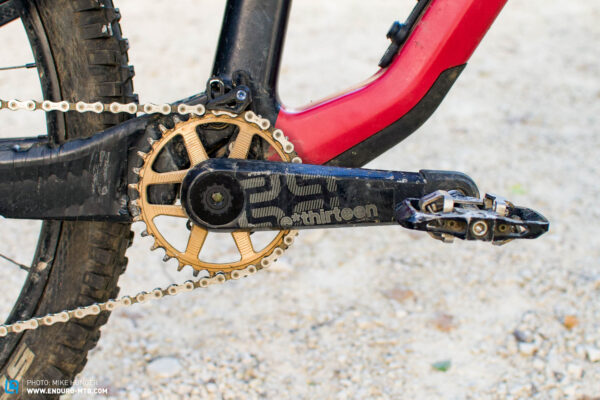
Installing the E*thirteen drivetrain into your bike is fairly easy if you already know how to install a Shimano or SRAM drivetrain. First you need to screw the E*thirteen bottom bracket into the frame using the special tool provided. Now you can attach the E*thirteen Helix Race chainring directly to the crank arm using the lockring, slide the XCX Race Carbon crankshaft through the bottom bracket and attach it to the other crank arm. As with most cranks, you’ll need to eliminate side play using the crank preload ring, which feels pretty sturdy considering it’s made of plastic and withstood our attempts to damage it by over-tightening it. Assembly instructions are included in the scope of delivery, so that even inexperienced DIY enthusiasts can easily assemble the drive train components.
The Helix Race cassette consists of two parts, with ten robust steel sprockets in the higher gears (9-36 teeth) and two lightweight aluminum sprockets in the lower range (43-52 teeth). This means that if there is damage or excessive wear, you can only replace part of the cassette. E*thirteen has developed its own cassette locking system based on an additional 3mm clamping screw to secure the aluminum part of the cassette to your MICRO SPLINE or XD driver. Once this is done you can slide the steel sprockets over the drive housing and lock it into place using a standard cassette tool. The two parts of the cassette are then secured against loosening with a separate 3 mm adjusting screw. This makes installing the E*thirteen Helix Race cassette a little more complicated than a conventional SRAM or Shimano cassette, which you simply have to slide over the drive body and tighten with the locking ring. But let’s be honest: once you install a cartridge, you won’t touch it again for a while!
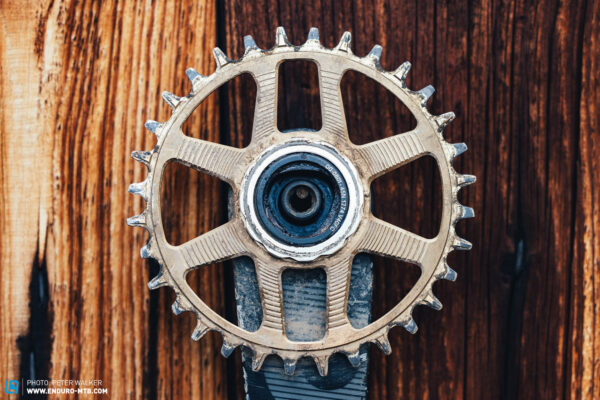
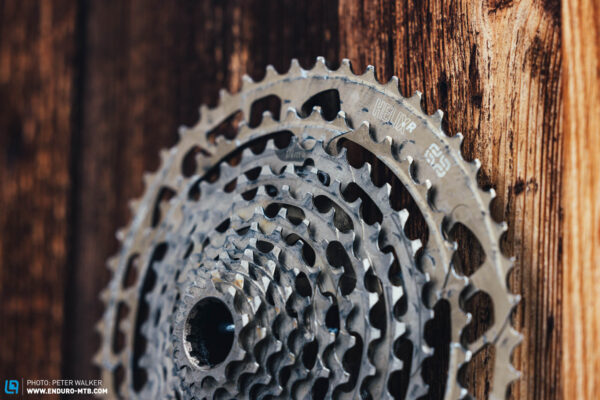
We have combined the E*thirteen XCX Race carbon cranks, the Helix Race chainring (32 teeth) and the Helix Race cassette with a SRAM XX1 AXS rear derailleur and a matching chain. We tested the drive over the course of the year both on our home trails and in countless bike park sessions – and even took part in a few enduro races. During this time, the E*thirteen drive worked flawlessly and reliably both uphill and downhill. If you’re tackling steep climbs on your local mountain, the wide gear range of the Helix Race cassette is a suitable option for most inclines. The gear increments aren’t too big, so you don’t find yourself wishing for gears between the gears you have. However, shifting is not quite as smooth as with a Shimano XT gearshift, for example, and it sometimes takes a little longer for the chain to engage properly on the sprockets. However, this is only a small problem and only really becomes significant when you’re chasing a podium on an enduro stage – it didn’t bother us on relaxed bike park laps. During the testing period, the drivetrain was put under real stress and was exposed to everything from thick mud to sand and dust. Aside from a few scuff marks on the cassette teeth, which may look a little rough but don’t affect functionality, the Helix Race delivered a solid performance. The E*thirteen XCX Race carbon crankset also took a few knocks, but survived our long-term test unscathed, with only some cosmetic damage. The front of the crank arms is covered with a protective film that at least partially prevents the heel from rubbing. Although the XCX cranks were developed specifically for XC, they passed our long-term tests with flying colors.
Our conclusion about the E*thirteen Helix/XCX Race drive
With the XCX Race Carbon cranks and the matching Helix Race chainring, E*thirteen offers a solid alternative to the most common drive components available on the market and stands out clearly from the top drive players thanks to its cross-brand compatibility and the larger gear range. In addition, the E*thirteen drive impresses with sensible gear gradations and excellent durability. Only the somewhat complicated installation, the somewhat rougher switching process and the slightly damaged paintwork spoil the positive overall impression.
Tops
- Large aisle area
- Sensible gear gradation
- Good durability
Flops
- More complex installation
- Not the smoothest gear changes
- Susceptible to cosmetic damage
For more information, see ethirteen.com.
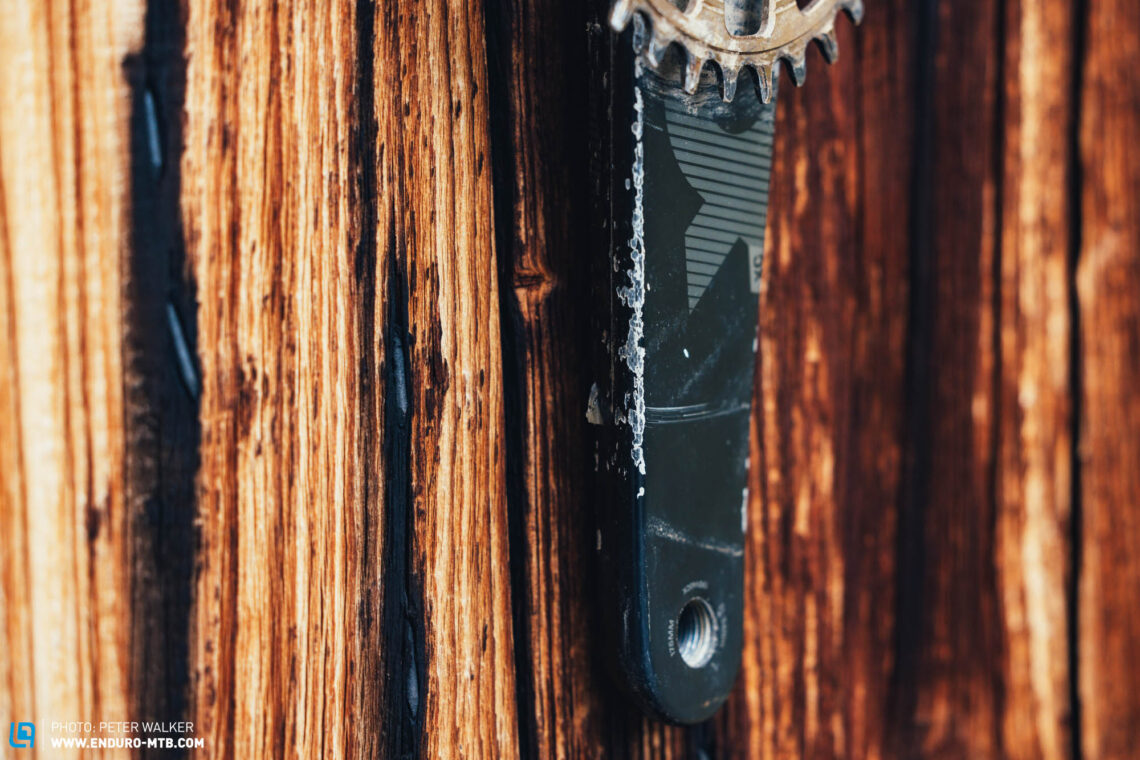
Did you like this article? Then we would be happy if you would support us with a monthly contribution. By supporting ENDURO, you are helping to ensure a sustainable future for quality mountain bike journalism. Click here to find out more.
Words: Mike Hunger Photos: Peter Walker, Mike Hunger
